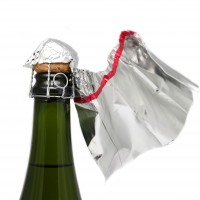Many people mistakenly call all sparkling wines “Champagne,” which is technically incorrect. That term is reserved for sparkling wine made from the traditional method within the boundries of the Champagne region of France and using only Chardonnay, Pinot Noir and Pinot Meunier. There are, however, sparkling wines made with this traditional method in other countries and within other regions of France. These sparkling wines, with their differing grape varieties, can be an interesting and budget-wise alternative to Champagne itself.
Spain’s version of sparkling wine made by the traditional method is known as Cava. The majority is produced from the Catalan vineyards of Penedès with some production in Rioja, Navarra, and Utiel-Requena. The rules of production enforce the traditional method and the wines must spend a minimum of 9 months in bottle before disgorgement. Another interesting fact is the cork must bear a four-pointed star on its base. As you would expect, the grape varieties are different from what we find in the Champagne region. The grapes used here are Macabeo (relatively neutral in flavor), Xarel-lo (strong earthy flavor), and Parellada (mild apple flavor). Most Cava is dry with low acidity and unlike Champagne, are not made for ageing.
South Africa has its version of traditional style sparkling wine called “Cap Classique” (older name is Vonkelwijn). It’s a generic term for any wine in the Cape that is produced by the traditional method. The only mandatory criteria is that these wines must have 12 months on the lees (yeast sediment ). Here we see a variety of grapes used individually or in differing blends. These varieties include Chardonnay, Pinot Noir, Pinot Meunier, along with Pinotage, Shiraz, and Chenin Blanc.
As we mentioned, France reserves the term “Champagne” for traditional method sparkling wine made within the Champagne region. What about all the other French regions that make sparkling wines by traditional method and are outside Champagne? These share the name Crémant. Stricter production controls came about for these wines in 1975 determining the proportion of grape varieties in the blend, yields of juice and the rule of a minimum of 9 months on the lees. The regions distinguish themselves by placing the name of the region in the title but the grape varieties vary from region to region. These wines are made from the grapes that make the best still wines of the region with some examples including: Crémant de Alsace (Pinot Blanc and Riesling), Crémant de Bourgogne (Chardonnay and Pinot Noir), Crémant de Limoux (Chardonnay, Chenin Blanc, and Mauzac), and Crémant de Loire (Chardonnay, Chenin Blanc and Cabernet Franc).
With all of these Champagne alternatives, we can experiment with sparkling wines from different countries and with different grape varieties without compromising quality or breaking the bank. So, I encourage you to try these “non-Champagne” sparkling wines. And remember, sparkling wines are good anytime, life is a celebration!


 Masters of Wine
Masters of Wine Wine and Spirits Education Trust
Wine and Spirits Education Trust